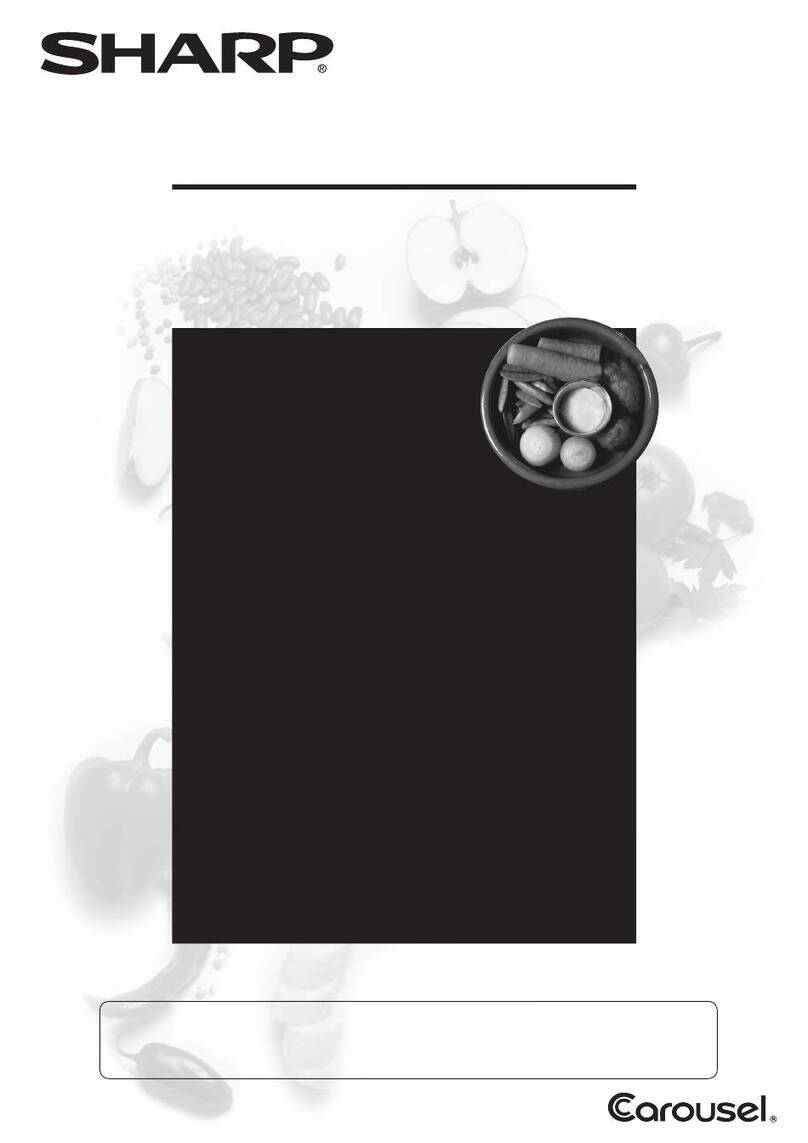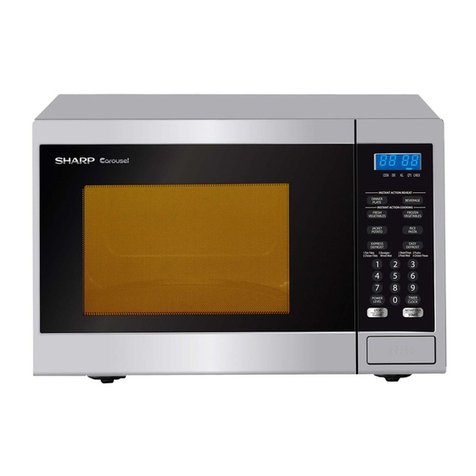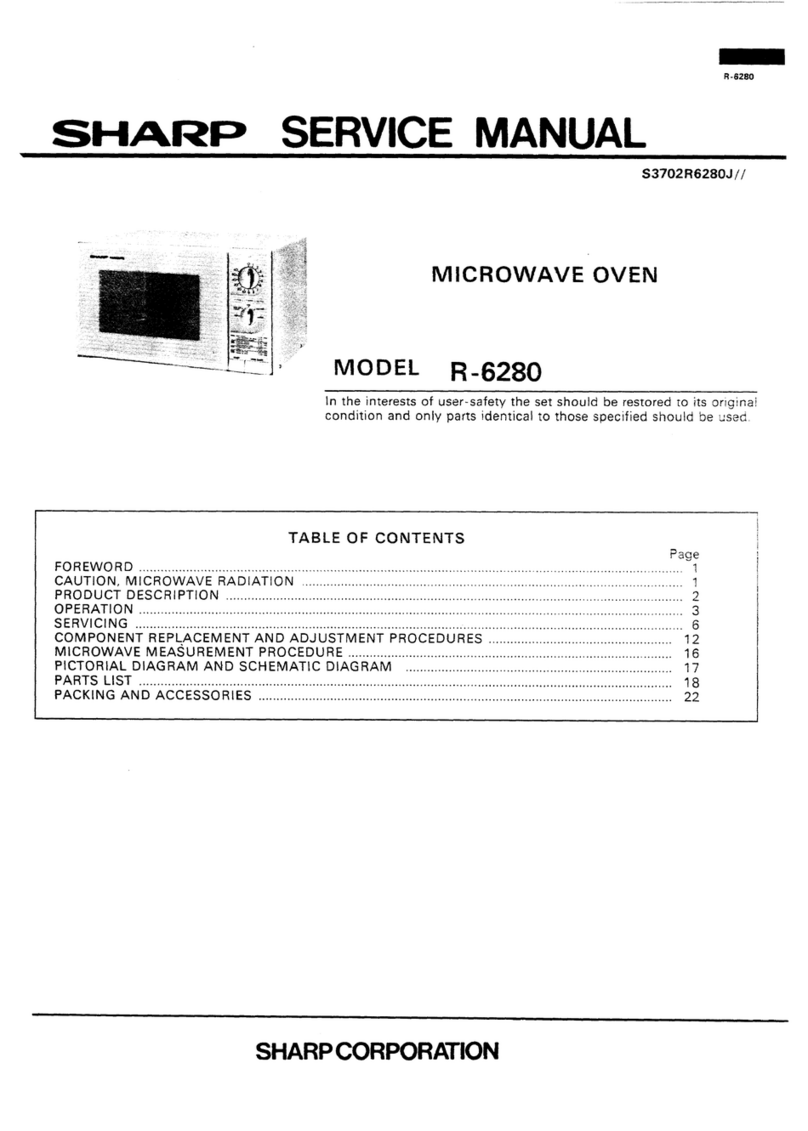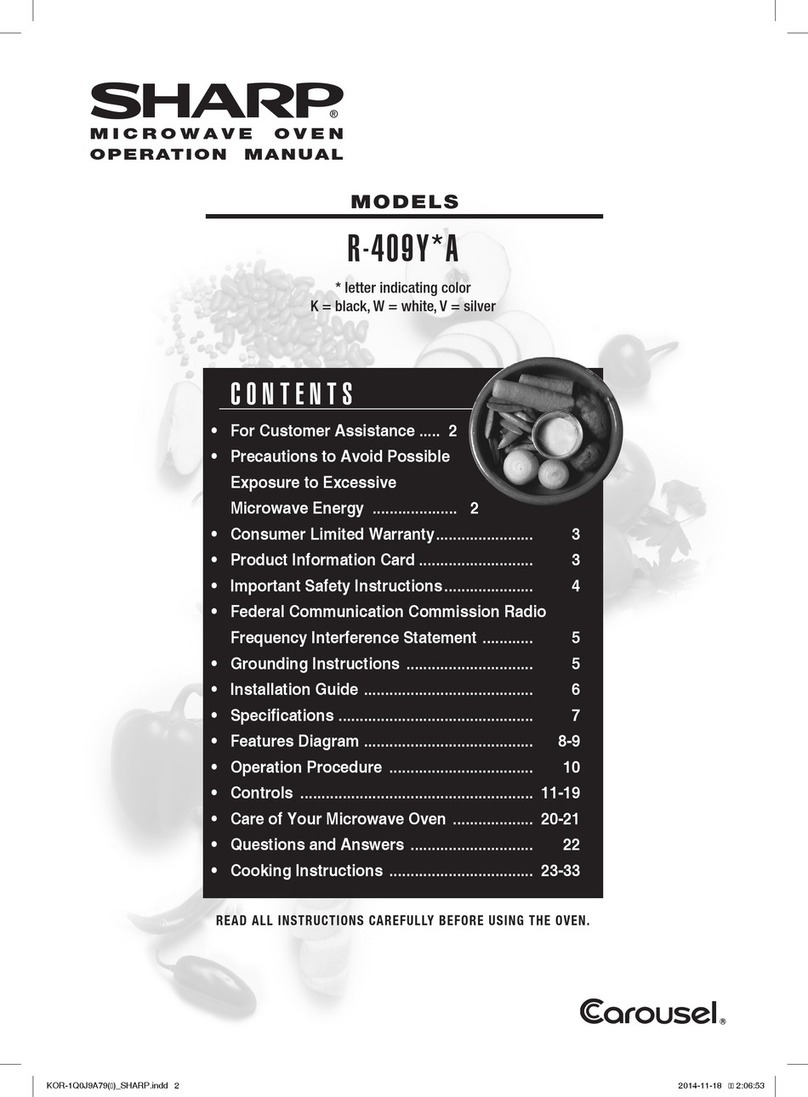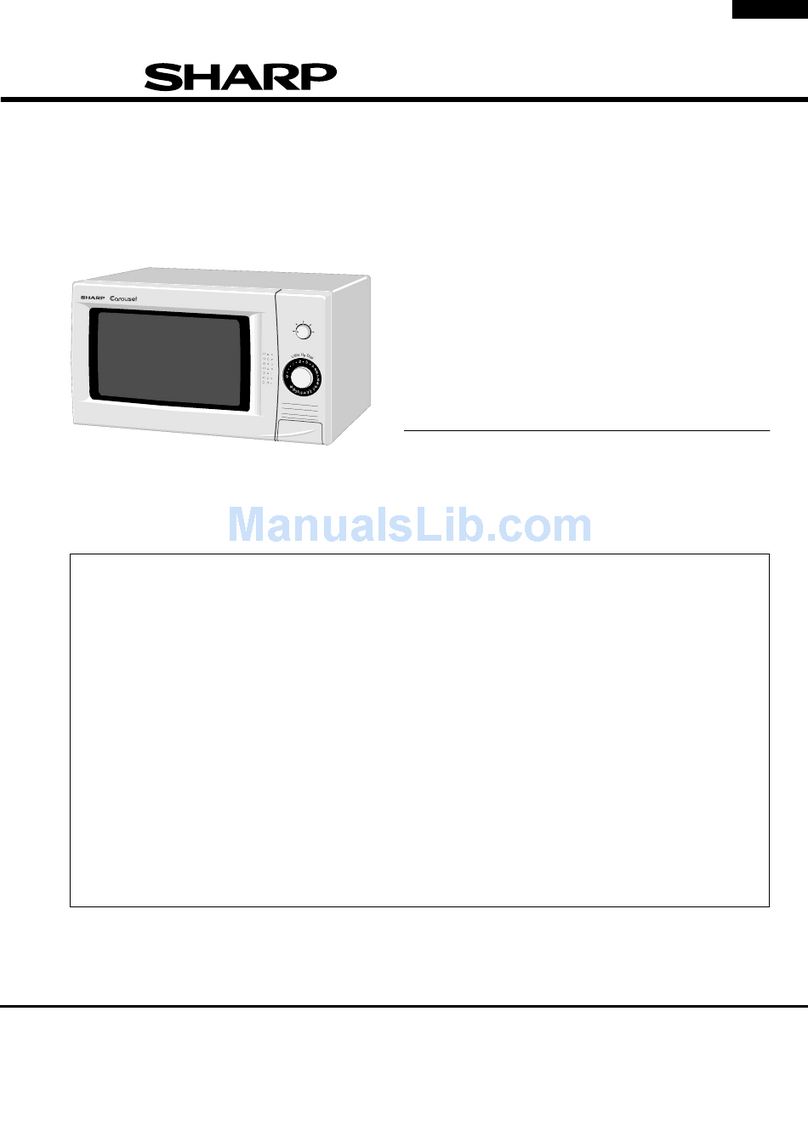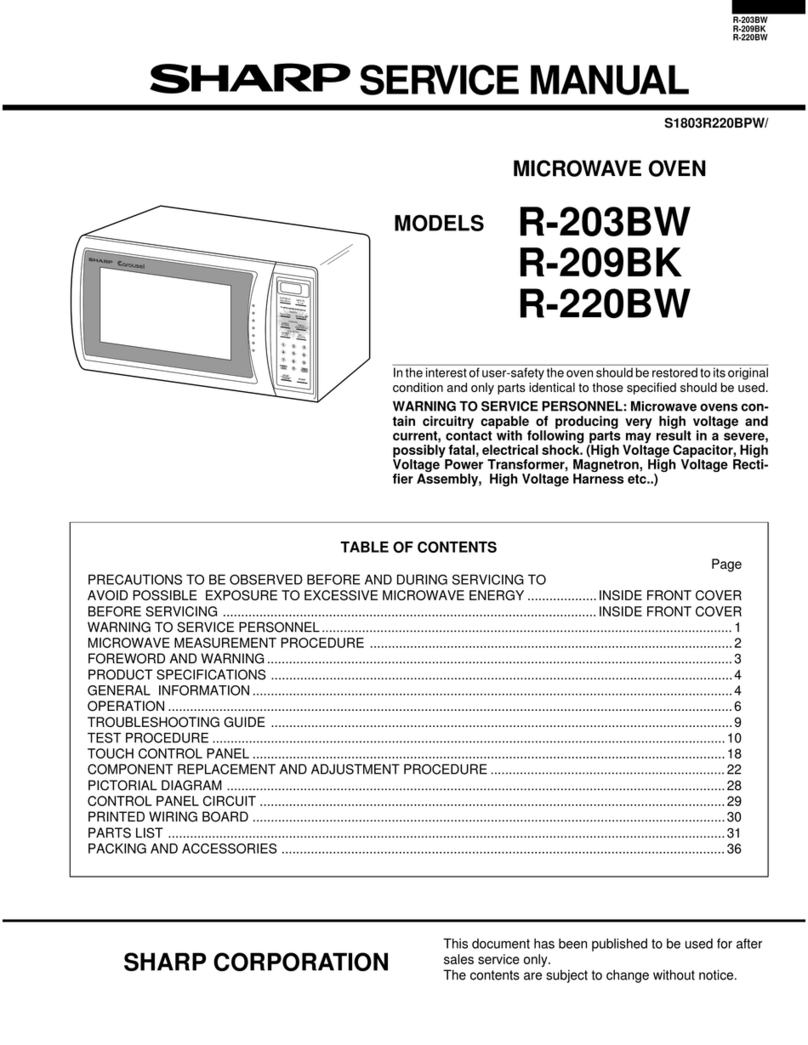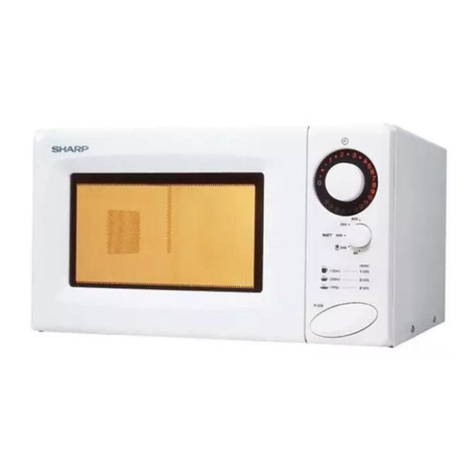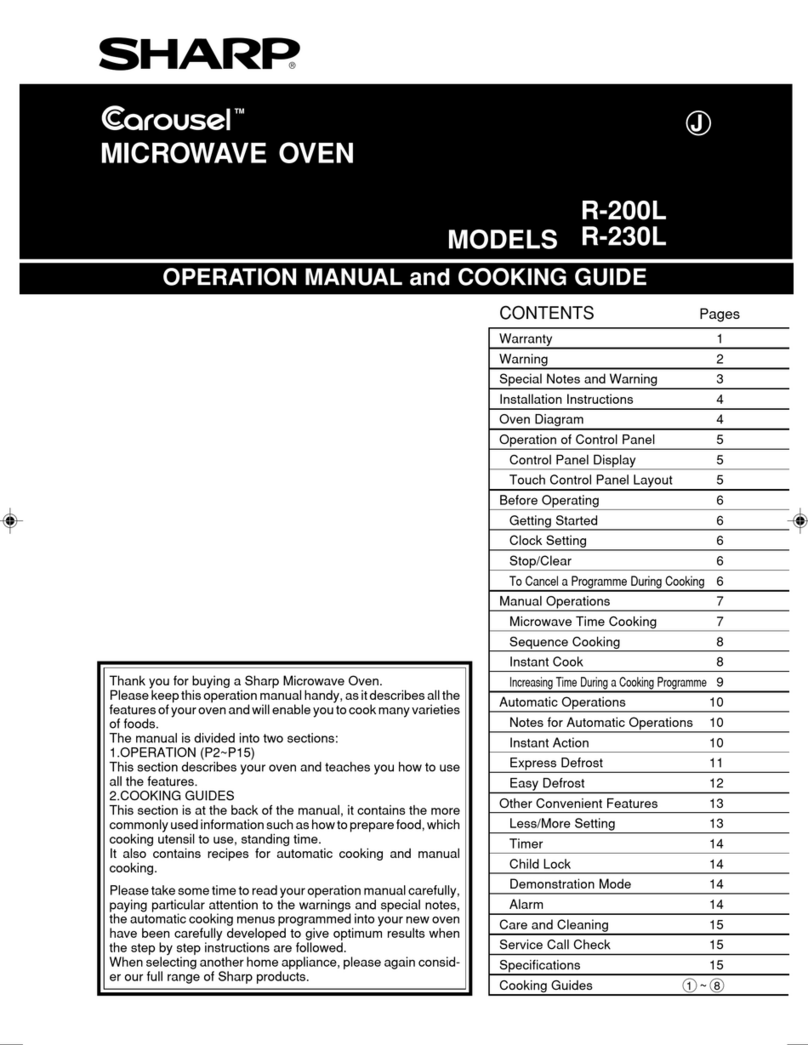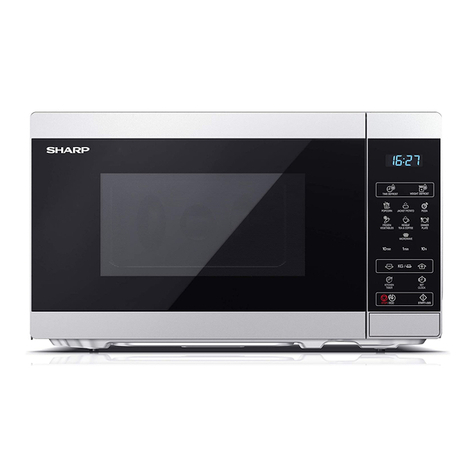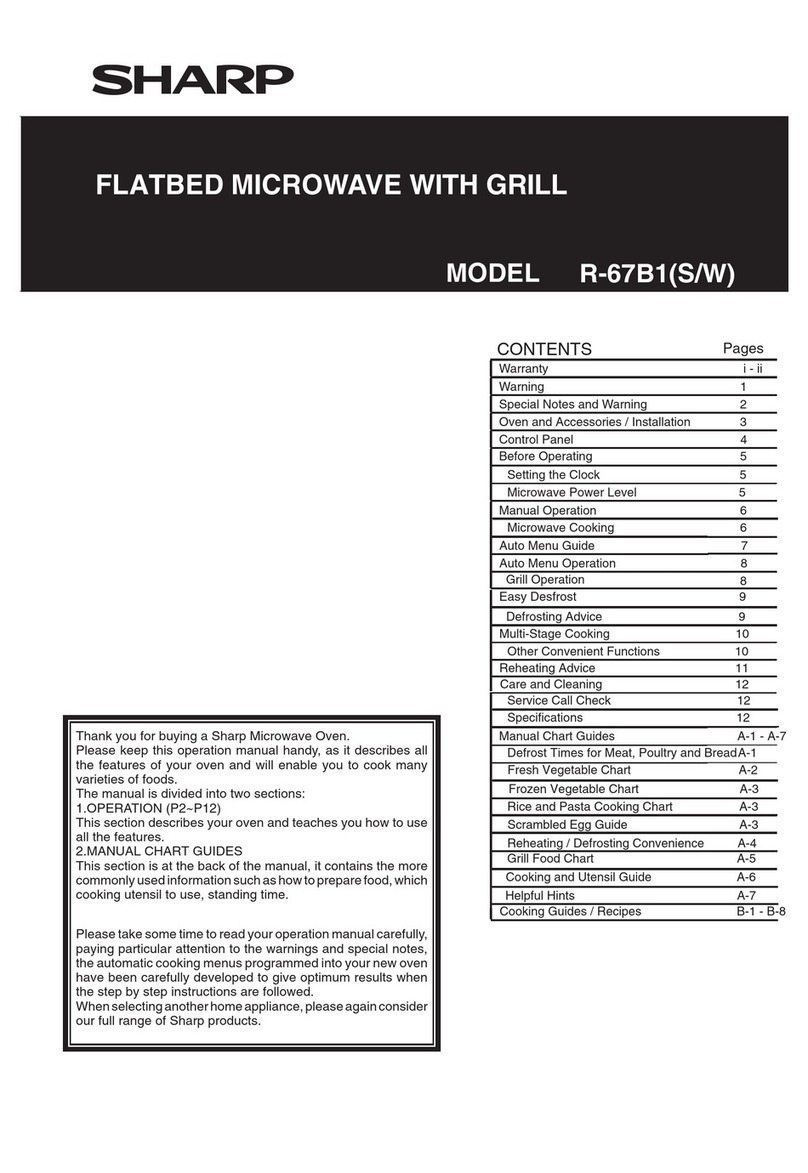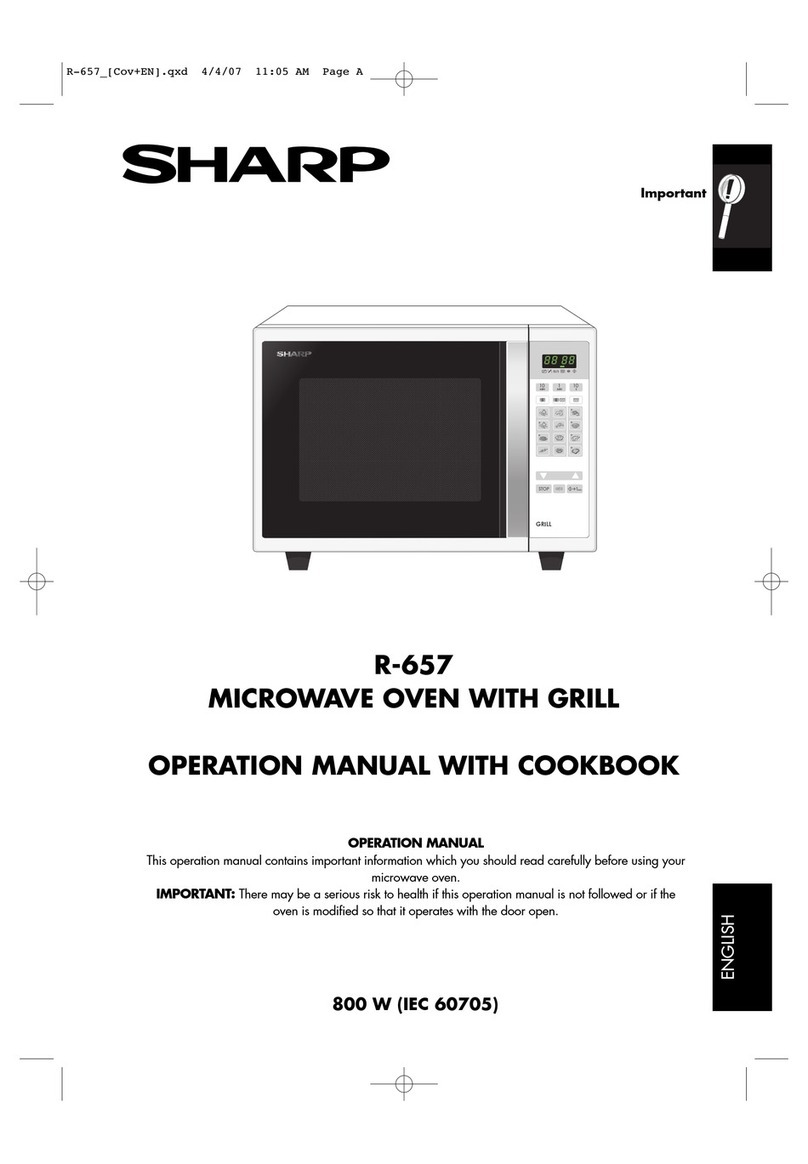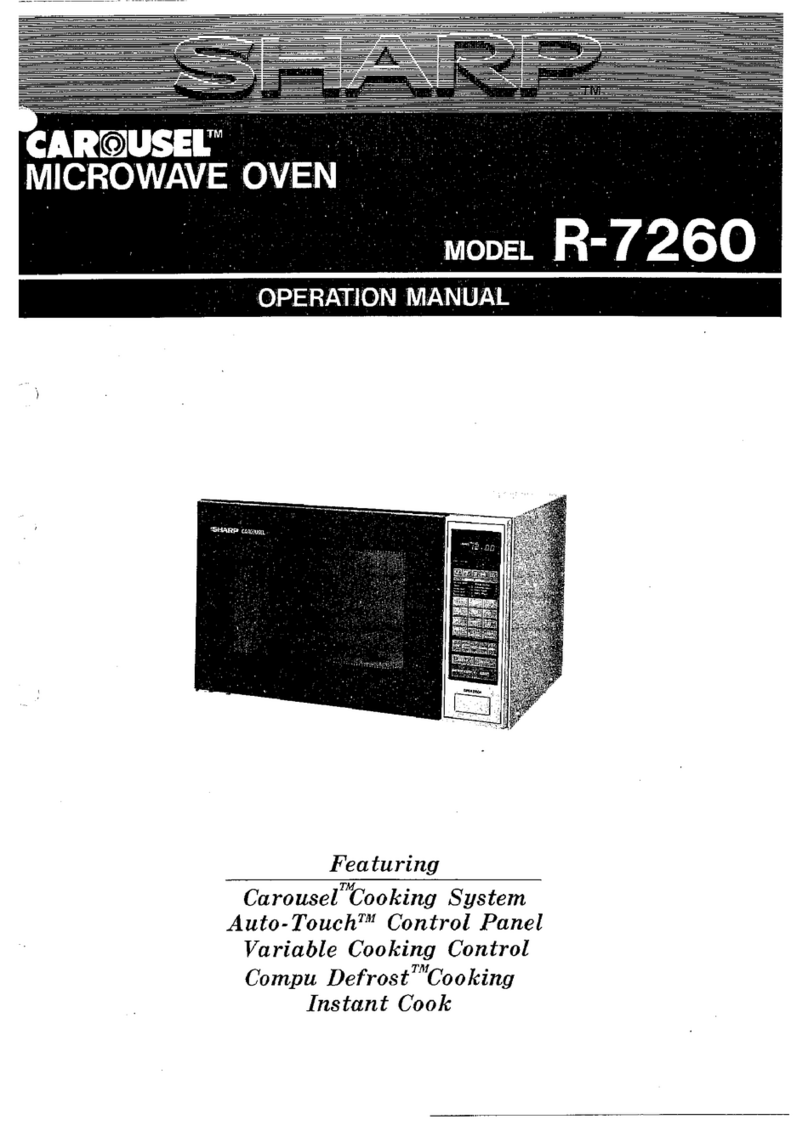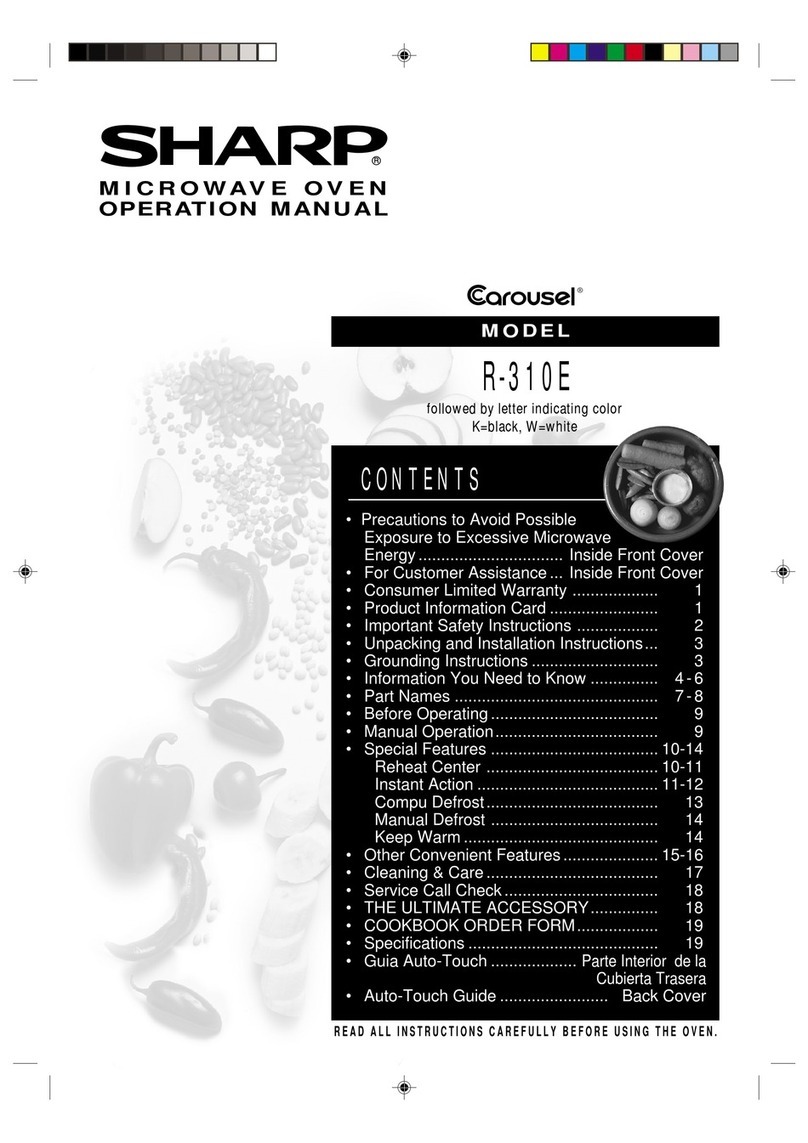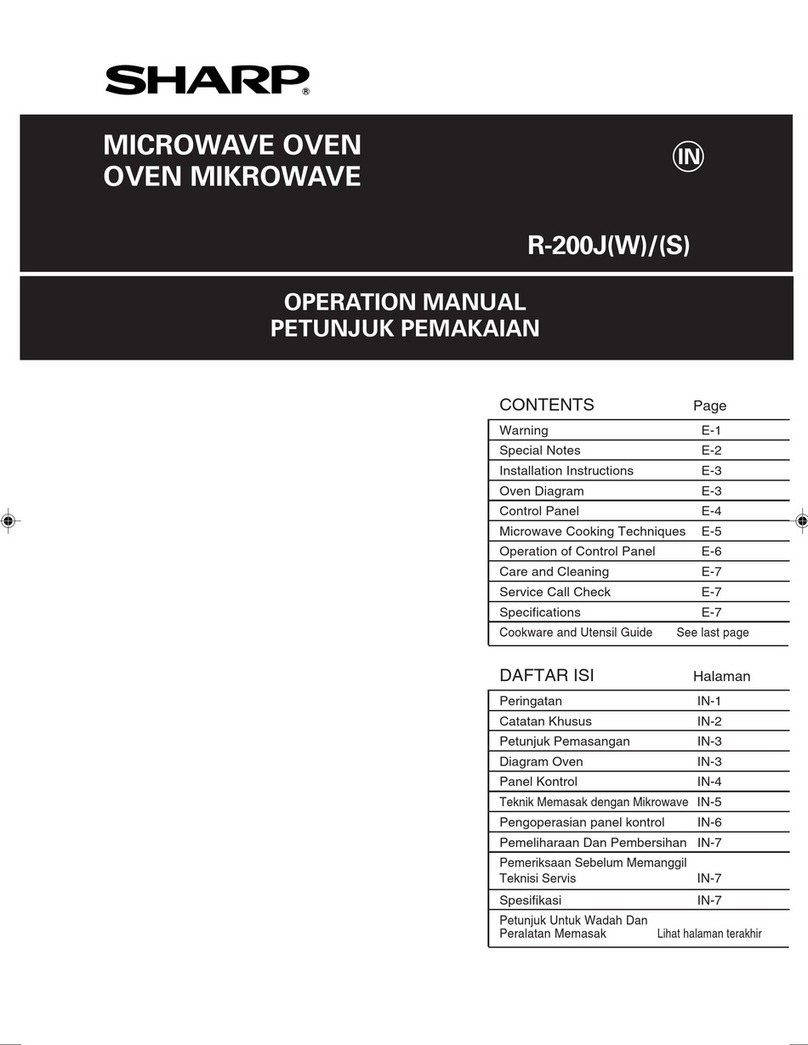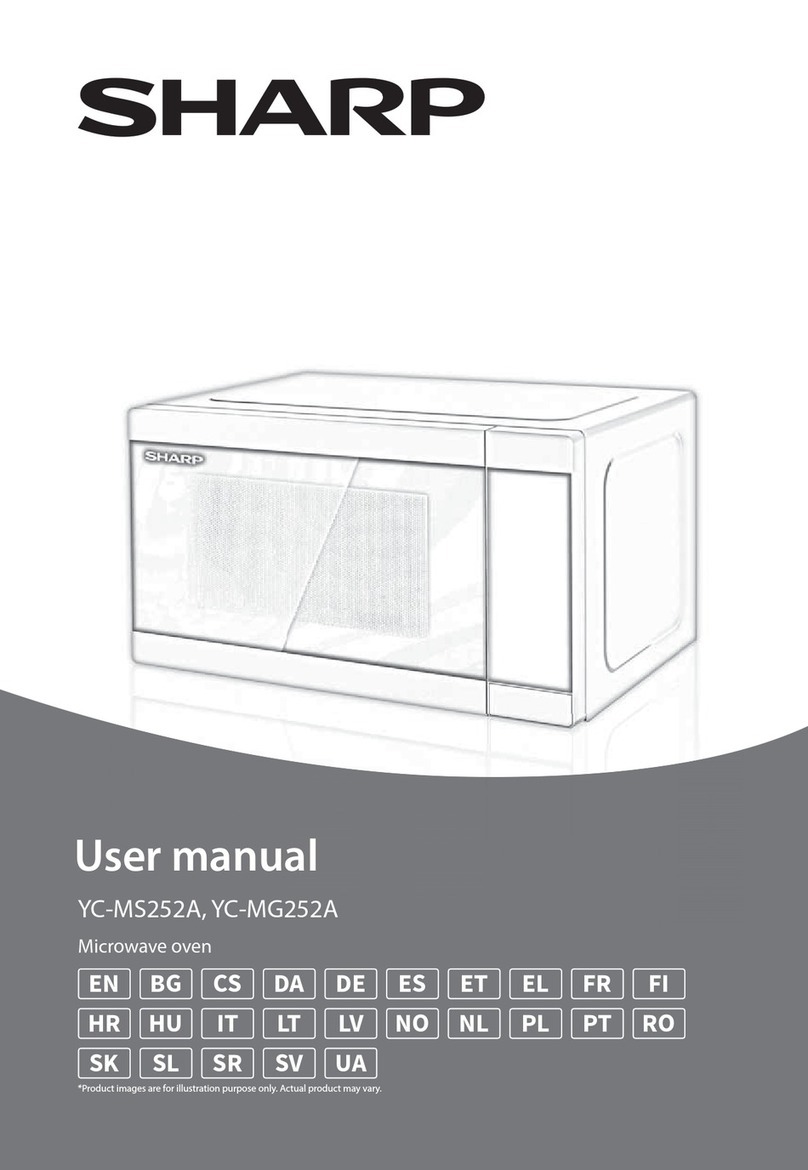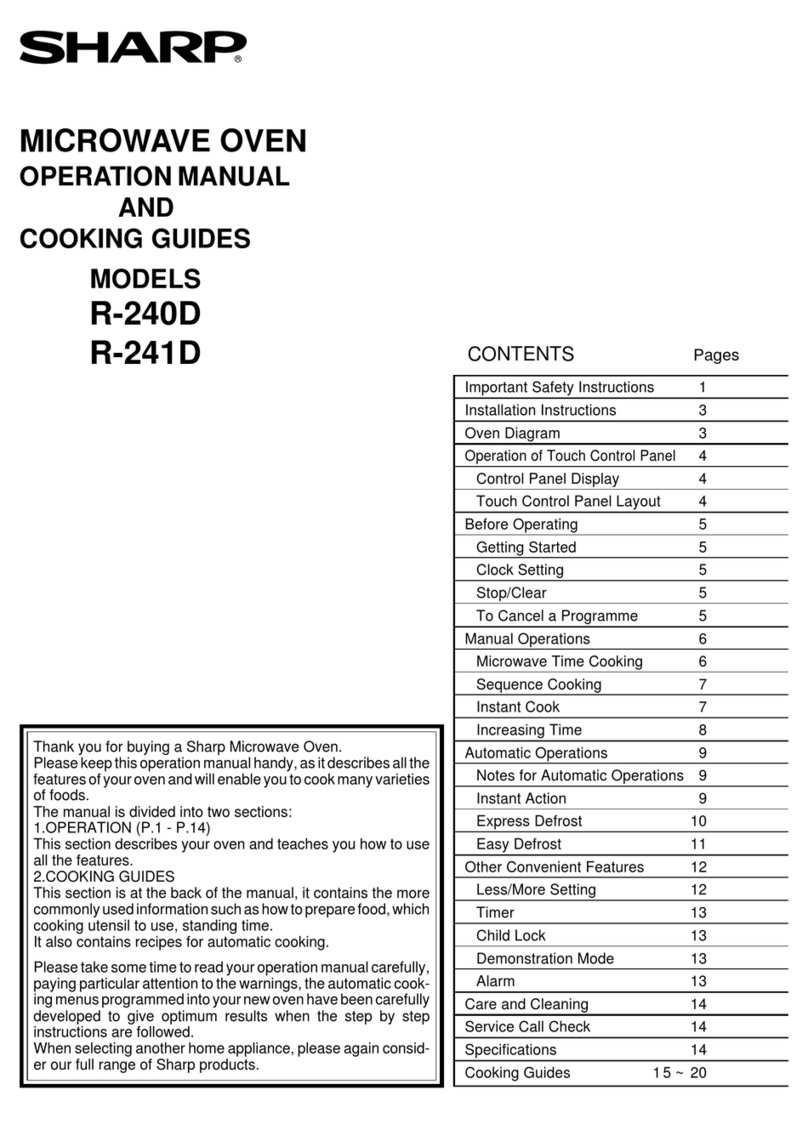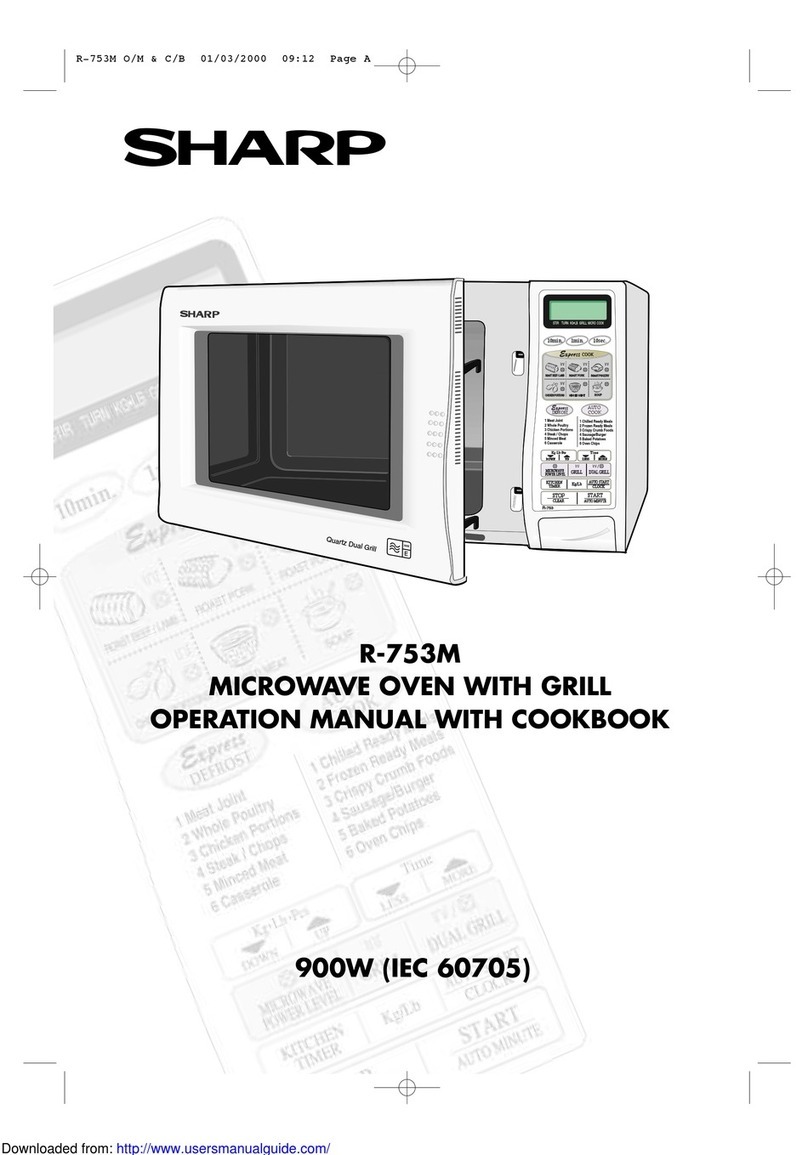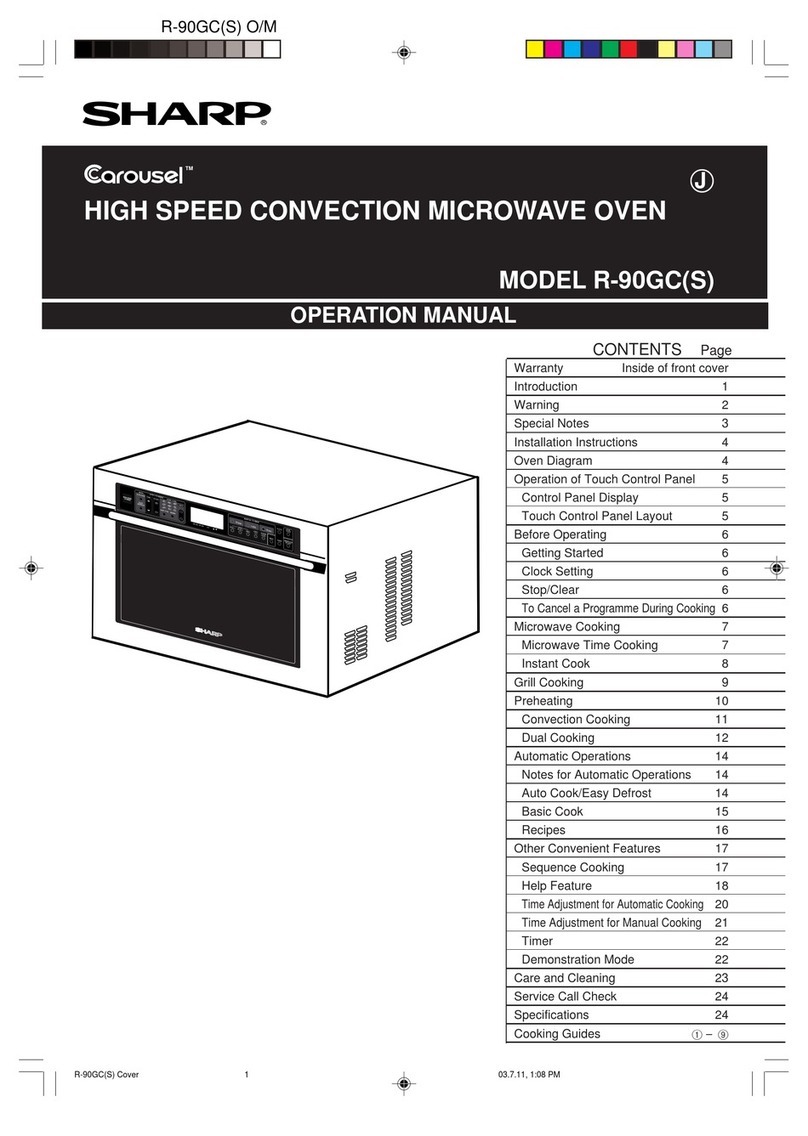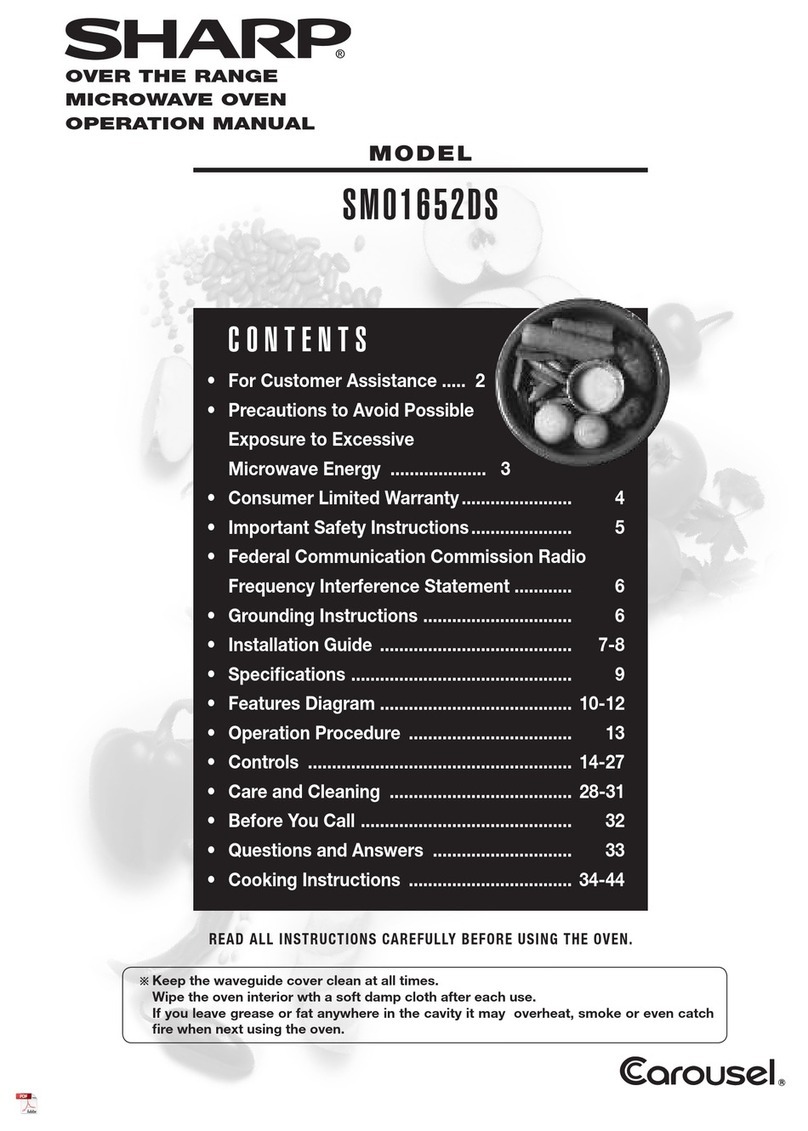R-340A
4
OPERATION SEQUENCE
OFF CONDITION
Closingthe door activatesall door interlockswitches (1st.
latch switch and 2nd. interlock relay control switch).
IMPORTANT
Whentheovendoorisclosed,themonitorswitchcontacts
(COM-NC) must be open.
Whenthemicrowaveovenispluggedinawalloutlet,rated
voltage is supplied to the control unit.
Figure O-1 on page 25
1. The display will show flashing "88:88".
2. To set any programmes or set the clock, you must first
touch the STOP/CLEAR pad.
3. " : " appears in the display.
NOTE: When the oven door is opened, the oven lamp
comes on at this time.
MICROWAVE COOKING CONDITION
HIGH COOKING
Enter a desired cooking time with the touching NUMBER
pad and start the oven with touching START pad.
Function sequence
Figure O-2 on page 25
CONNECTED COMPONENTS RELAY
Oven lamp, Fan motor, Turntable motor RY1
Power transformer RY2
1. Ratedvoltage.issuppliedtotheprimarywindingofthe
power transformer. The voltage is converted to about
3.3 volts A.C. output on the filament winding and high
voltage of approximately 2000 volts A.C. on the
secondary winding.
2. The filament winding voltage (3.3 volts) heats the
magnetronfilamentandthehighvoltage(2000volts)is
sent to the voltage doubling circuit, where it is doubled
to negative voltage of approximately 4000 volts D.C..
3. The 2450 MHz microwave energy produced in the
magnetron generates a wave length of 12.24 cm. This
energyischannelledthroughthewaveguide(transport
channel)into the oven cavity,where the food isplaced
to be cooked.
4. Whenthecookingtimeisup,asignaltoneisheardand
the relays RY1+RY2 go back to their home position.
The circuits to the oven lamp, power transformer, fan
motor and turntable motor are cut off.
5. When the door is opened during a cook cycle, the
switches come to the following condition
CONDITION
DURING DOOR OPEN
SWITCH CONTACT COOKING (NO COOK-
ING)
1st. latch switch COM-NO Closed Open
2nd. interlock relay
control switch COM-NO Closed Open
Monitor switch COM-NC Open Closed
The circuits to the power transformer, fan motor and
turntable motor are cut off when the 1st. latch switch
and2nd. interlock relay control switchare madeopen.
The oven lamp remains on even if the oven door is
opened after the cooking cycle has been interrupted,
because the relay RY1 stays closed. Shown in the
display is the remaining time.
6. MONITOR SWITCH CIRCUIT
The monitor switch is mechanically controlled by
ovendoor,andmonitorstheoperationofthe1stlatch
switch and 2nd. interlock relay.
6-1 When the oven door is opened during or after the
cycle of a cooking program, the 1st. latch switch and
2nd. interlock relay control switch must open their
contacts first.
After that the contacts (COM-NC) of the monitor
switch can be closed.
6-2. When the oven door is closed, the contacts (COM-
NC) of the monitor switch must be opened. After that
thecontactsofthe1st.latchswitchand2nd.interlock
relay control switch are closed.
6-3. Whentheovendoorisopenedandthecontactsofthe
1st. latch switch and 2nd. interlock relay remain
closed.ThefuseM10Awillblow,becausethemonitor
switch is closed and a short circuit is caused.
MEDIUM HIGH, MEDIUM, MEDIUM LOW, LOW
COOKING
When the microwave oven is preset for variable cooking
power, rated voltage is supplied to the power transformer
intermittently within a 32-second time base through the
relay contact which is coupled with the current-limiting
relay. The following levels of microwave power are given.
SETTING;
